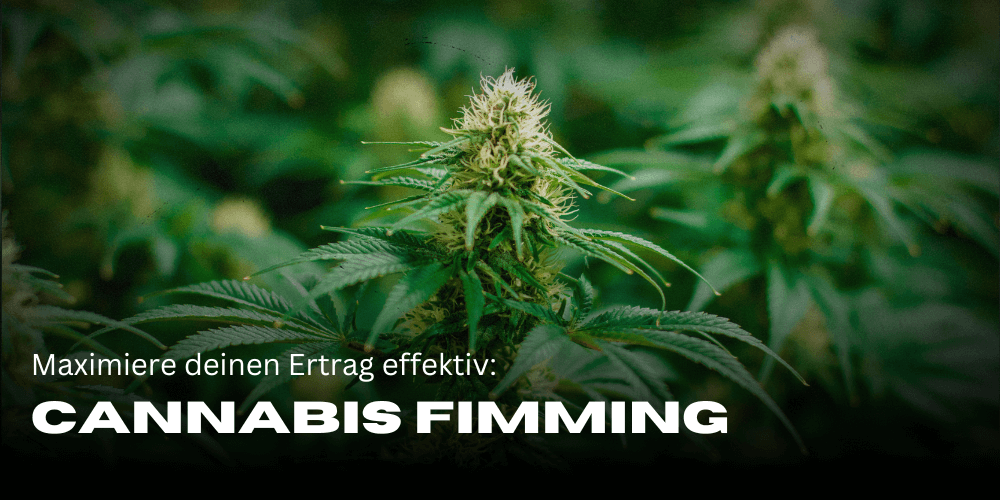Cannabis Fimming: Maximise your yield effectively

Inhaltsverzeichnis: Cannabis Fimming: Maximise your yield effectively
Fimming cannabis: A step-by-step guide
Vorbereitung
Before you start trimming your cannabis plants, it is important to make the right preparations. Make sure your plants are in the vegetative growth phase, as this is the ideal time for trimming. Make sure your plants are healthy and vigorous, as weakened plants may not respond well to pruning.
Here are the steps to prepare:
- Cleaning tools Always use sterile scissors or clean fingernails to avoid infection. Disinfect your tools thoroughly before cutting.
- Prepare environment : Make sure you work in a clean environment to minimise the risk of contamination.
- Select plant : Select the strongest and healthiest plants for fimming.
The right cutting technique
The actual cutting technique for fimming is crucial for success. Here is a step-by-step guide:
- Identify the growth peak Find the top growing tip of your plant. This is the youngest part of the plant that develops the fastest.
- Mark the interface Plan to cut off about 75% of the growing tip. This means that a small part of the tip will remain.
- Cut off the tip Use sterile scissors or a clean fingernail to cut off about 75% of the tip. Be careful not to cut too deeply so as not to stress the plant too much.
- Watch the cut Check whether the cut is even and clean.
After use: care and observation
After fimming, it is important to carefully care for and monitor your plants to ensure that they recover well and continue to grow optimally.
- Regular check Check your plants regularly for signs of stress or infection. Pay particular attention to the cut surface.
- Water and nutrients : Make sure your plants get enough water and nutrients to support the growth of the new shoots.
- Lichtmanagement Make sure that the new shoots receive sufficient light. This promotes photosynthesis and supports growth.
With the right care and observation after fimming, you can ensure that your plants stay healthy and grow optimally. With a little patience and attention, you will soon see the positive results of this technique.

Fazit
Fimming is an innovative and effective technique in cannabis cultivation that aims to maximise the yield of your plants and optimise their growth. By partially removing the growing tip, several new shoots are created, resulting in bushier, more stable and higher-yielding plants. This method is particularly beneficial for growers who want to realise the full potential of their plants, as it creates a greater number of flowering sites and improves light utilisation.
Compared to topping, where the entire growing tip is removed, fimming offers the advantage that the plant is less stressed and produces more shoots. Whilst topping is a simple and effective method to promote symmetrical growth, fimming offers additional advantages due to the increased number of new shoots and more compact growth.
Ultimately, the choice between fimming and topping depends on your specific goals and growing experience. Both techniques have their own advantages and disadvantages, and it can be helpful to try both to find out which method best suits your growing style. With practice and patience, you can significantly improve the yield and health of your cannabis plants by using these techniques.
Whichever method you choose, make sure you look after your plants carefully and monitor them regularly to get the best results. Good luck with your cultivation and here's to a rich harvest!


















